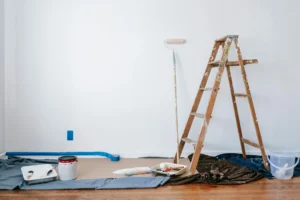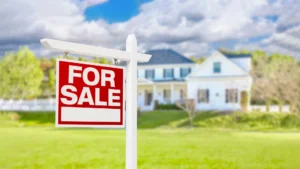Selling a property is rarely simple, but when it comes to uninhabitable properties, the process can feel particularly daunting.
An uninhabitable property is one that is considered unsafe, unsuitable, or unlawful for someone to live in. This could mean anything from structural damage to the lack of essential facilities like running water or electricity. Whether your property has been damaged by fire, left derelict, or simply doesn’t meet legal living standards, navigating the sale requires careful planning and understanding of the challenges involved.
In this guide, we’ll break down what makes a property uninhabitable, the hurdles you may face when selling it, and the strategies to overcome them. We’ll also cover financial considerations like stamp duty refunds and valuation tips to help you make informed decisions. By the end, you’ll feel confident in your ability to tackle this unique property challenge.
Understanding Uninhabitable Properties
Selling an uninhabitable property can feel overwhelming if you’re unfamiliar with what makes a property uninhabitable, the challenges involved, and the legal implications. Let’s break this down step-by-step to help you understand where you stand.
What Makes a Property Uninhabitable?
A property is considered uninhabitable when it’s deemed unsafe or unsuitable for someone to live in.
Here are some key criteria that classify a property as uninhabitable:
- Structural Damage: Cracked foundations, sagging roofs, or unstable walls that pose a safety risk.
- Hazardous Conditions: Presence of asbestos, severe mold, or faulty / old wiring that could endanger occupants
- Lack of Basic Amenities: No functioning plumbing, heating, or electricity.
- Health and Safety Risks: Infestations, contaminated water supply, or lack of proper ventilation.
- Regulatory Non-Compliance: Failing to meet building codes or planning permissions.
- Environmental Risks: Proximity to flood zones, landslides, or other environmental dangers.
Common Reasons Properties Become Uninhabitable
Uninhabitable properties can arise from various situations, including:
- Neglect: Long periods of disuse or abandonment can lead to significant wear and tear.
- Natural Disasters: Floods, fires, or severe storms can cause irreversible damage.
- Vandalism or Squatting: Broken windows, graffiti, and damages caused by unauthorised occupants.
- Aging Infrastructure: Older homes may have outdated systems that no longer meet modern standards.
Legal Implications of Owning an Uninhabitable Property
Owning an uninhabitable property comes with specific legal responsibilities:
- Safety Obligations: As the owner, you’re responsible for ensuring the property doesn’t pose risks to anyone accessing it.
- Environmental Concerns: If the property has hazardous materials like asbestos, you may be required to remediate them.
- Compliance with Local Authorities: Some councils may impose penalties if uninhabitable properties are left neglected.
Ignoring these legal obligations can lead to fines, legal disputes, or even forced sales, so it’s essential to stay informed and act responsibly.
Selling an Uninhabitable Property
Challenges in Selling Uninhabitable Properties
Selling an uninhabitable property is not like selling a typical home. Some of the challenges you might face include:
- Limited Buyer Pool: Traditional homebuyers looking for move-in-ready homes are unlikely to show interest.
- Valuation Difficulties: Determining the fair market value of an uninhabitable property can be tricky.
- Financing Restrictions: Many buyers rely on mortgages, which are often unavailable for uninhabitable properties.
Strategies for Marketing Uninhabitable Properties
- Sell to Property Buying Companies
Companies like Zapperty specialise in purchasing properties quickly, regardless of their condition. This eliminates the hassle of marketing and negotiations. - Market to Investors and Developers
Highlight the property’s potential for renovation or redevelopment to attract buyers interested in turning a profit. - Focus on the Land
If the property is beyond repair, market the value of the land itself, particularly if it’s in a desirable location. - Be Transparent
Transparency is key when selling an uninhabitable property. Provide detailed information. Share inspection reports, photos, and any documentation about the property’s condition. Be upfront about the property’s flaws to avoid legal disputes later on.
Financial Considerations
Stamp Duty Refund for Uninhabitable Properties
In some cases, uninhabitable properties qualify for a stamp duty refund. This tax relief applies if the property is deemed unsuitable for immediate habitation.
Here’s what you need to know:
- Buyers must provide evidence, such as a surveyor’s report, proving the property’s uninhabitable status.
- Refund applications must be submitted to HMRC within the required timeframe.
This can make your property more appealing to investors seeking tax savings.
How to Value an Uninhabitable Property
Determining the value of an uninhabitable property can be complex. Key factors include:
- Location: The area’s desirability can boost the property’s value, even if it’s in poor condition. Compare similar properties in the area to gauge demand.
- Extent of Repairs Needed: A property requiring minimal fixes will have a higher value than one needing extensive renovations.
- Land Value: If the structure itself holds little value, focus on the price of the land and its development potential.
- Seek professional valuation: Consider hiring a professional valuer or working with an experienced property buying company for an accurate assessment.
Costs of Repairs and Renovations
Before deciding to sell as-is, consider whether investing in minimal repairs could improve the sale price. For example:
- Fixing structural issues might attract more buyers.
- Addressing cosmetic concerns like repainting can make the property look less daunting.
However, if the costs outweigh the potential profit, selling the property in its current state is often the better option.
Conclusion
Selling an uninhabitable property can be a challenging process, but with the right knowledge and approach, it becomes more manageable. It’s important you target buyers like developers, investors, or property buying companies.
Financial considerations also play a significant role. Uninhabitable properties may qualify for a stamp duty refund, making them more appealing to certain buyers, while assessing repair costs and land value helps determine a realistic selling price. Ultimately, the key to a successful sale lies in transparency, strategic planning, and seeking professional guidance when needed. If you’re looking for a quick, stress-free sale, turning to a specialist buyer like Zapperty can simplify the process and deliver fast, fair results.
At Zapperty, we specialise in buying properties in any condition, offering fast cash offers and hassle-free sales. Whether your property needs repairs or is entirely uninhabitable, we’re here to help you navigate the process. Need to sell your uninhabitable property quickly? Get in touch with Zapperty today!




